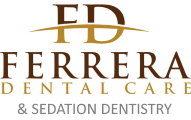 What are clear aligners used for?
What are clear aligners used for?
For a lot of patients, all they want is a tooth moved back into alignment. And for other people, it’s done because they can’t keep their teeth clean since their teeth are so mal aligned. Some people build so much calculus (or tartar) up on their teeth that without their teeth being in a good position, they just can’t keep it clean. So, they have to come in more frequently, or they go through the orthodontics. A lot of them have always wanted to get their teeth straightened anyway. They wanted to do it since they were kids, and now they’re at a point in their life where they have the finances to do so.
What are some of the advantages of clear aligners over regular braces?
I think the biggest advantage of clear aligners over regular braces is that the clear aligners allow the person to maintain the health of their mouth at a much higher level. This is because they can be taken off when they eat, and after they eat. And it’s all computer generated. So, for the most part, if the dentist does what they’re supposed to do, the bite should be correct at the end.
Which age groups are best suited for clear aligners?
I have patients that are as young as 10 years old, all the way to 50 years old that have gone through clear aligners.
Is the process the same for everyone?
It depends on what you are starting with. The more tooth movement you have, the longer it’s going to take. The less tooth movement you have, the less time it’s going to take. I tell people anywhere from six months to two years.
Are there situations where somebody would be better off with traditional braces over clear aligners?
First, I don’t put wires on any of the patients. But I do know when it’s time to refer someone to an orthodontist.
There are situations where the patient would require regular orthodontics. Many times it relates to the distance between the nose and the chin at rest, or when their teeth are together. This is what a dentist would call the vertical dimension.
If for some reason teeth have moved out of position because of a loss of a tooth, and the tooth is supererupted (where the tooth drifts out of its socket), clear aligners won’t push it back. In these cases, you’d need some kind of orthodontic wiring to grab ahold of the tooth and push it back into the socket and put it into a level plain of occlusion.
There are also situations where people have skeletal issues. We classify three basic skeletal profiles.
The first one is Class I, and that’s where the upper teeth fit outside the lower teeth.
Then there’s Class II, where there’s a big discrepancy between the upper teeth and the lower teeth that makes it look like the person has no chin. Their lower jaw just never grew out far enough forward.
The third is a Class III, where the lower jaw actually grows in front of the upper jaw.
Many times Class II and Class III are surgical cases, and you can’t do a surgical case without being able to wire the jaws together. You’d need regular orthodontics in order to be able to correct that.
How much do clear aligners typically cost?
The typical fee for the clear aligners is a couple of thousand dollars more than doing the wired braces.
It’s more expensive to do the clear aligners because you’re paying a company to take the scans that you make of their teeth, and move the teeth correctly into position to make these trays. So, there is a higher cost that’s transferred over to the patient.
If cost is truly the issue, then the wires are the way to go. If cost isn’t the issue, then it’s just a matter of how many trays since most of the companies charge per tray. And then the doctors charges per tray based on that too.
What are “trays”?
A tray is the clear aligner. It’s a term that dentists use, and it’s basically made over the model of the teeth.
The tray basically fits over the teeth. A thin, but also very hard piece of plastic is made from the models that are sent to the laboratory. These are scanned, and then the laboratory computer generates models from that in these incremental movements and makes trays over the top of them.
Are there multiple trays involved, or just one throughout the process?
There’s many, many trays. So, if the trays are changed every week, and you have a process that last two years, you’ll have trays for the upper and lower that are changed every week.
Most of the cases that I do are changed every two weeks. I give the patient a tray on the first day, and give them the date to change the tray to the second tray, and then see them once a month to make sure that the teeth are moving exactly like they’re supposed to be.
What about these “do-it-yourself at home” products?
The disadvantage of these do-it-yourself aligners is that if it’s not monitored closely by a dentist, it could throw the bite off. And that’s a big deal. What I’ve seen with my patients is they’re coming in with their bites messed up, and I can’t really help them because they’ve already gone through that particular situation, and I end up having to refer them to an orthodontist.
The companies behind these products are trying to eliminate orthodontics, but the bottom line is that these clear aligners companies, even though they have orthodontists on staff, you still need a general dentist to be able to put things in the mouth to help the teeth move.
All the patients that I’ve seen and talked to about it have usually talked about their bite, and their not being able to get their teeth together in the back, or in the front for that matter. When you look at them, they’re straight. It’s just that form follows function within dentistry and everything that we do. If you don’t get the function right, if the bites not right, the teeth are going to relapse. They’re going to go someplace, and it may not be that they go to a place that makes it easy to recover from.
Some people get headaches, and a whole plethora of issues that occur because of the bite being off. This would include temporal mandibular joint disease, which can lead to surgery if it isn’t corrected early enough. It’s probably the number one reason that people have problems with headaches and joint issues is that their bites off. And a lot of times people will lose teeth and think it’s no big deal and they function a lot of years with a missing tooth until they start breaking other teeth, or they start having problems with their joints. So it does make a difference.
And then there is the lack of oversight. Dentists are in a health care industry that’s ruled by state regulations and federal regulations. There’s no regulations that are going after these do-it-yourself companies.
